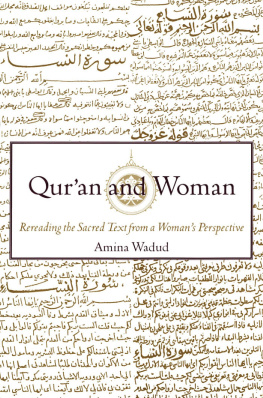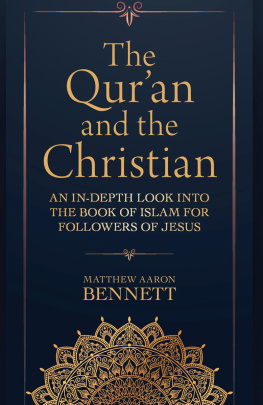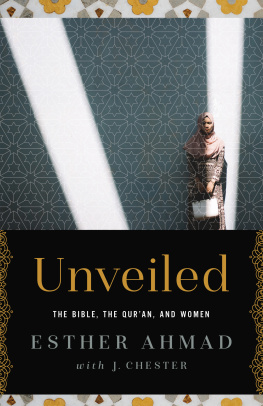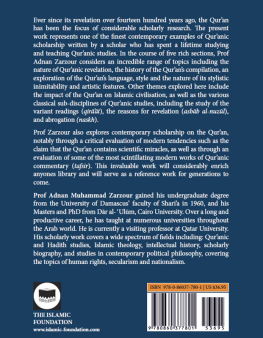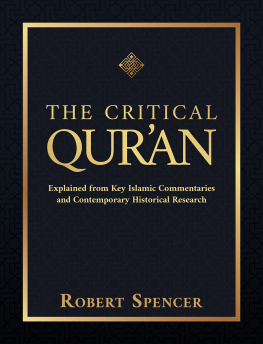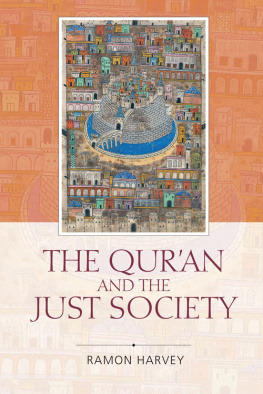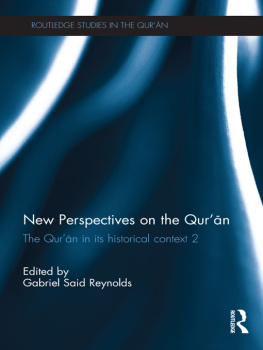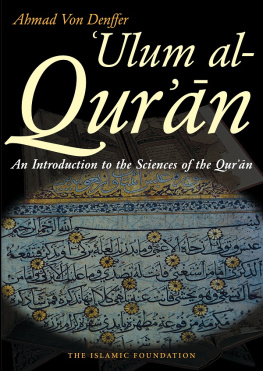Qur'an and Woman
QUR'AN AND WOMAN
Rereading the Sacred Text from a Woman' s Perspective
AMINA WADUD
NEW YORK OXFORD
OXFORD UNIVERSITY PRESS
1999
Oxford University Press
Oxford New York
Athens Auckland Bangkok Bogota Buenos Aires Calcutta
Cape Town Chennai Dar es Salaam Delhi Florence Hong Kong Istanbul
Karachi Kuala Lumpur Madrid Melbourne Mexico City Mumbai Nairobi Paris Sao Paulo Singapore Taipei Tokyo Toronto Warsaw and associated companies in
Berlin Ibadan
First published in 1992 by Penerbit Fajar Bakati Sdn. Bhd., Kuala Lumpur, Malaysia
Copyright 1999 by Oxford University Press
Published by Oxford University Press, Inc.
198 Madison Avenue,New York, New York 10016
Oxford is a registered trademark of Oxford University Press
All rights reserved. No part of this publication may be reproduced, stored in a retrieval system, or transmitted, in any form or by any means, electronic, mechanical, photocopying, recording, or otherwise, without the prior permission of Oxford University Press.
Library of Congress Cataloging-in-Publication Data Wadud,Amina.
Qur 'an and woman : rereading the sacred text from a woman's perspective / Amina Wadud.2nd ed.
p. cm.
Includes bibliographical references and index. ISBN 0-19-512836-2
Women in the Koran. 2. KoranTheology. I. Title BP134.W6W28 1999
297.1'2283054--dc21 98-49460
1 3 5 7 9 8 6 4 2
Printed in the United States ofAmerica on acid-free paper
Dedication
This book is dedicated to all who struggle to hear the voice of their faith expressed by the Qur'anespecially the Sisters in Islam.
Contents
Preface to the First Edition |
Acknowledgments |
Glossary |
Introduction: How Perceptions of Woman Influence |
Interpretation of the Qur'an |
Background
Methodology: A Hermeneutical Model
Language and Prior Text
The Prior Text of Gender-specific Language
Perspectives on Woman
Distinctions between Men and Women
Key Terms and Concepts in the Qur'an
A Word about Quotations and Translations of Qur'an
Chapter Outlines
In the Beginning,Man and Woman Were Equal:
Human Creation in the Qur'an |
Creation and the Language of the Unseen |
Creation of the First Parents |
The Creation of Humankind |
The Origins of Humankind: Ayah; Min; Nafs; Zawj |
The Dualism of the Creation |
The Events in the Garden |
Conclusion |
The Qur'anic View of Woman in This World |
How the Qur'an Teaches the Reader through the Events in the Lives of the Individuals It has Mentioned
The Signifance of the Women Mentioned or Referred to in the Qur'an
Woman as an Individual
Distinctions between Individuals: Taqwa Distinctive Female Characters in the Qur'an
The Equity of Recompense: The Hereafter |
in the Qur'an |
The Hereafter and Creation |
Values of the Hereafter |
Stages of the Hereafter |
Death |
Resurrection |
Judgment |
The Equity of Recompense |
Recompense of the Individual |
The Final Abode |
Hell |
Paradise |
Companions in the Hereafter |
Hur-al-'ayn in Qur'anic Discussions of Paradise |
Zawj in the Hereafter |
The Hereafter from Allah's Perspective ('inda Allah) |
Summary |
Rights and Roles of Women: Some Controversies |
Functional Distinctions on Earth |
Woman is not just Biology |
Darajah |
Faddala |
Nushuz: Disruption of Marital Harmony |
The Significance of Context and Chronology in Qur'anic Social |
Reforms for Women |
Divorce |
Patriarchy |
Polygamy |
Witness |
Inheritance |
Male Authority |
Child Care |
Conclusion |
Appendix: List of Female Characters Mentioned in the Qur'an |
Bibliography |
Index |
Preface
T HE research for Qur'an and Woman started as early as 1986. At that time, I was quite naive about how significant it would be to pursue a female inclusive reading of the Qur'an. I was also unaware of how to develop such a reading. Although interest in the question of woman in Islam was not unique, attempting to pursue an answer to that question exclusively by examining the notion of woman in the Qur'an turned out to be nearly unprecedented throughout fourteen centuries of Islamic thought. However, in these times of post-modernist critique when the very foundations of knowledge are challenged to move beyond certain value laden tendencies, such a method can be viewed as part of a larger area of discourse by feminists who have constructed a valuable critique of the tendency in many disciplines to build the notion of the normative human from the experiences and perspectives of the male person.
One objective behind my research was to establish a definitive criteria for evaluating the extent to which the position of women in Muslim cultures accurately portrays the intention of Islam for women in society. It was easy to designate the Qur'an as the ultimate criteria available within the Islamic intellectual legacy, as well as its most authoritative reference point, because it enjoys an overwhelming consensus among Muslimshowever variously understoodas the word of Allah, revealed to the Prophet Muhammad for the purpose of guidance to all humanity. Hence, it could be used as criteria for checking if the status of women in actual Muslim societies could be defined as Islamic.
Because women are not deemed as important as men in most Muslim majority or minority communities, Muslim women do not enjoy a status equal to men. If the definitive basis for what Islam means is determined by what Muslims do, then women and men are not equal. However, I reasoned that only explicit Qur'anic indication that women and men were other than co-equals could require acceptance of this inequality as a basis of faithfulness to Islam. Mer-cifully, the more research I did into the Qur'an, unfettered by centuries of historical androcentric reading and Arabo-Islamic cultural predilections, the more affirmed I was that in Islam a female person was intended to be primordially, cosmologically, eschatologically, spiritually, and morally a full human being, equal to all who accepted Allah as Lord, Muhammad as prophet, and Islam as din. What remained was to advocate the details of this research as legitimate grounds for contesting the unequal treatment that women have experienced historically and continue to experience legally in the context of Muslim communities.
The confirmation of women's equality that resulted from my studies in the Qur'an was overwhelming and the research evolved into the publication of the book Qur'an and Woman. At the time of its publication in 1992, when my scholarly role in Islamic studies was advancing, I was beginning the activist phase of my work in the gender jihad as a Muslim woman. Indeed, Qur'an and Woman became a major contribution to and my entryway into the discourse over rights in both the Muslim and global contexts.

